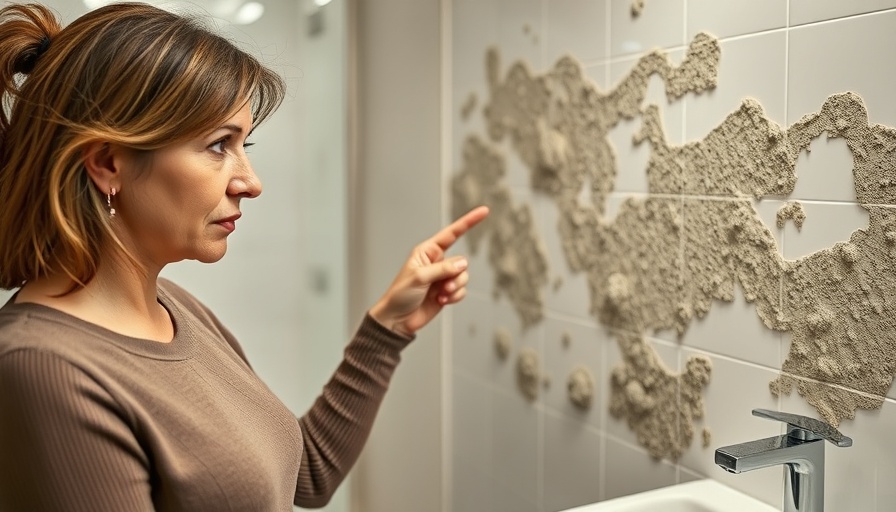
Understanding the Hidden Dangers of Water Damage
When we think of water damage, our minds often jump to the obvious signs—puddles on the floor or stained carpets. However, the real danger often lies beneath the surface. Hidden water damage can lurk in places you can’t easily see, such as beneath carpets and behind walls. Ignoring these issues can lead to mold growth, structural problems, and ultimately costly repairs.
Why is Hidden Water Damage a Serious Concern?
Water damage often occurs from a variety of sources, and these hidden areas may trap moisture long after the initial incident. For instance, carpets and underlay can hold water for weeks, creating a moist environment ideal for mold to flourish. According to the US EPA, mold can begin to grow within 24 to 48 hours following water damage. Delaying action can result in significant health risks, particularly for those with allergies or respiratory conditions.
Common Causes of Hidden Water Damage
There are several common culprits that lead to hidden water damage:
Flooding: Excessive rain or busted pipes can inundate homes quickly, with water seeping into hidden areas.
Leaky Pipes: A slow drip behind walls or under sinks might go unnoticed for weeks, leading to eventual mold growth.
Poor Ventilation: Areas like bathrooms and kitchens often trap humidity if they lack proper airflow, creating prime conditions for mold.
Small Spills: Spills that aren’t adequately dried can foster long-term water damage.
Roof Leaks: Water can infiltrate your home through roof leaks, traveling down walls before you notice.
Understanding these causes is a key step in preventing and addressing hidden water damage.
Detecting the Signs of Mold Growth
Mold is a particularly notorious issue associated with water damage. It can develop rapidly and often produces allergens that trigger health concerns. Look for signs such as:
Musty odors
Visible discoloration
Increased allergy symptoms among household members
If you notice these indicators, it may be necessary to consult a professional for mold inspection and treatment.
Practical Tips for Preventing Hidden Water Damage
Preventing hidden water damage requires proactive measures:
Act Quickly: After any flooding or significant leak, ensure you dry your home within 24-48 hours to mitigate mold risks.
Regular Maintenance: Check for any leaks from plumbing or appliances regularly. Fix small leaks before they become bigger issues.
Inspect Your Roof: Regular roof inspections can go a long way in preventing water intrusion from rain or snow.
Maintain Proper Ventilation: Ensure that areas prone to moisture, such as bathrooms and kitchens, are adequately ventilated.
By following these practical tips, you can significantly reduce the risk of hidden water damage and mold growth in your home.
Steps to Take if Water Damage Occurs
In the event of water damage, here are the recommended steps to take:
Remove standing water using pumps and wet vacuums.
Dry affected areas with fans or dehumidifiers.
Inspect for mold growth, focusing on damp areas that may not be immediately visible.
Consider professional mold remediation services if mold covers more than 10 square feet or if it affects your HVAC system.
Document damage for insurance claims.
It's crucial to respond swiftly and effectively to minimize damage and health risks.
The Importance of Professional Help
While some may opt for DIY solutions when dealing with mold, consulting with professionals is often essential, particularly for large-scale infestations. Services specializing in mold remediation ensure thorough inspections, effective treatment options, and guidance on preventing further issues. Engaging with certified mold remediation companies can provide peace of mind and protect your home.
Conclusion and Call to Action
Don't let hidden water damage become a silent threat in your home. Whether you've experienced recent flooding or suspect ongoing issues, taking timely action is crucial. Consider scheduling a mold inspection or reaching out to affordable mold remediation services near you.
For valuable tips on maintaining a healthy and mold-free living space, explore our blog series on mold management, and make sure your home is a safe haven for your family.
#WaterDamage, #MoldGrowth, #Flooding, #MoldRemediation, #WaterDamagePrevention
 Add Row
Add Row  Add
Add 




 Add Row
Add Row  Add
Add 


Write A Comment